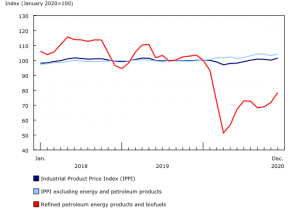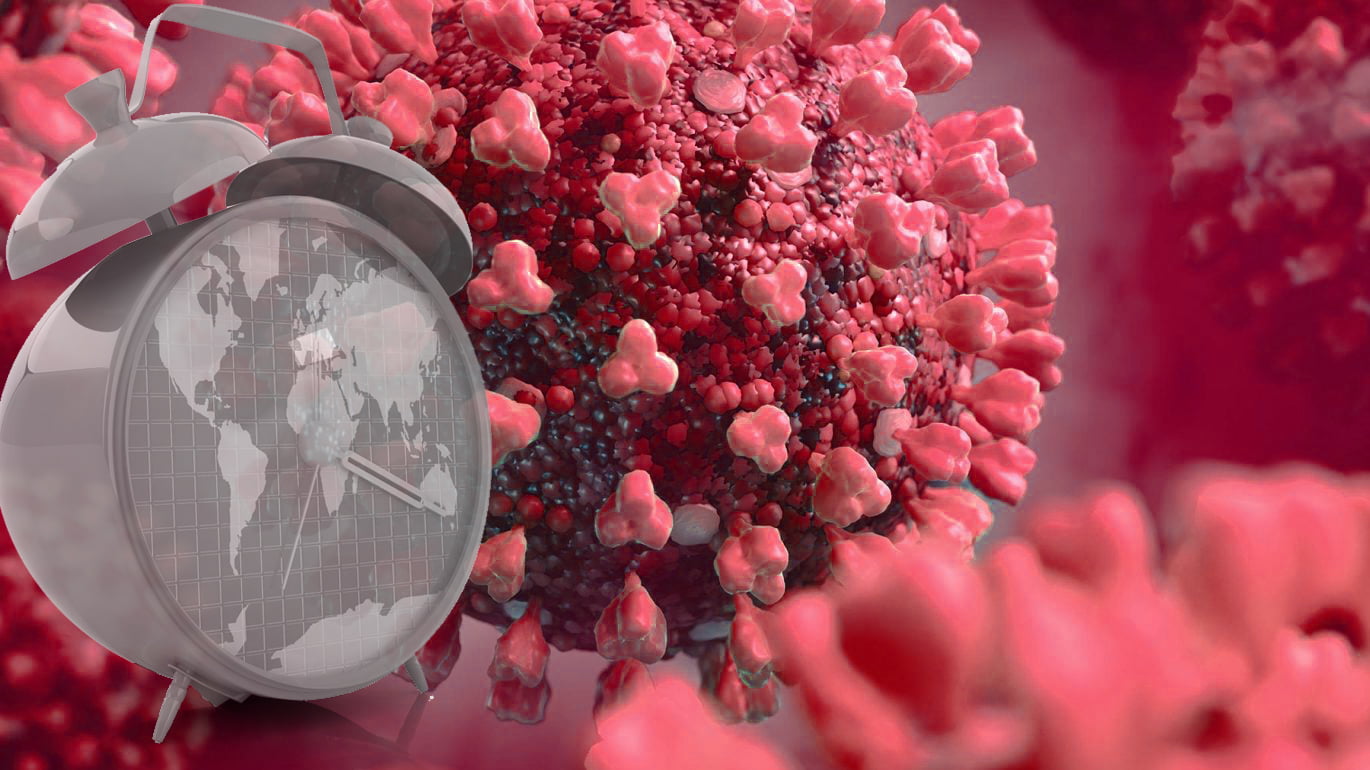Vital updates
- The Government of Ontario has issued an updated guidance document for public health and workplace safety measures (PDF link). A summary of rules and regulations for business can be viewed here. The GNCC urges all individuals and organizations to comply with these regulations, and hopes that rigorous compliance, along with more resources devoted to rapid testing, contact tracing, and vaccination will bring the pandemic under control and enable an end to restrictive measures for business as soon as possible. For more information, call the provincial Stop the Spread Business Hotline at 1-888-444-3659, or contact the GNCC.
- Today, the CRTC launched a consultation on its proposed framework to address botnets, harmful networks of malware-infected computers that are under the control of a malicious actor. Botnets facilitate some of the most damaging cyber attacks, including ransomware and identity theft. These attacks cause significant harm to Canadians, businesses and organizations that provide critical services such as hospitals, schools and government bodies. Canadians are invited to submit their comments by March 15, 2021 using only one of the following methods:
- Filling out the online form
- Writing to the Secretary General, CRTC, Ottawa, Ontario K1A ON2 or
- Sending a fax to 819-994-0218.
- Statistics Canada is currently hiring approximately 32,000 people for census enumerator and crew leader positions across Canada. Census information is vital for all communities for planning schools, daycare, housing, hospitals, emergency services, roads, public transportation, and employment skills training. In response to the COVID-19 pandemic, Statistics Canada has adapted to ensure that the 2021 Census is conducted throughout the country in the best possible way, using a safe and secure approach.
- The Government of Canada, through the Canadian Institutes of Health Research, is providing $1M to support a COVID-19 knowledge synthesis network to support decision and policy making in the response to the rapidly evolving COVID-19 pandemic. Led by Dr. John Lavis from McMaster University, the COVID-19 Evidence Network will:
- rapidly prepare and update evidence syntheses to support Canadian decision and policy makers;
- maintain a publicly available inventory of the best evidence syntheses for COVID-19 decisions to ensure that Canadian decision-makers have the most updated science available when needed;
- monitor emerging issues where evidence syntheses may be needed in the future; and
- work with Canadian and global partners to reduce duplication and enhance coordination in the evidence response to COVID-19.
- The City of Port Colborne’s community grant program is now accepting the first-round of applications from non-profit organizations until Monday, Feb. 1, 2021. As approved at the Nov. 23, 2020 Council Meeting, the community grant program will increase by 20 per cent. This year the grant committee will distribute more than $35,000 to non-profit organizations, charitable organizations, and service organizations that benefit the citizens of Port Colborne and enhance the quality of the community, especially during a pandemic. Organizations can only apply once per fiscal year, with the first round of applications due Monday, Feb. 1, 2021. The deadline to apply for the second round of grants is Wednesday, June 30, 2021. For more information about the application process and/or grant policy committee, contact Nancy Giles, Executive Assistant to Mayor and CAO at 905-835-2900 ext. 301 or email mayoradmin@portcolborne.ca.
 According to flash estimates, the Industrial Product Price Index (IPPI) increased 1.4% in December, following two months of decline. Excluding energy and petroleum products, the IPPI rose 0.9%. The gain in the IPPI was led mainly by higher prices for lumber and other wood products (+10.8%), particularly softwood lumber (+21.7%). This increase comes after two months of decline in October and November, following record and near-record increases from July to September. Prices for energy and petroleum products (+7.9%) also contributed significantly to the increase in the IPPI, particularly refined petroleum energy products (+9.2%) such as diesel and biodiesel fuels (+10.1%) and motor gasoline (+7.7%). Prices for primary non-ferrous metal products (+3.1%) also supported the IPPI‘s growth, led mainly by higher prices for unwrought aluminum and aluminum alloys (+8.1%) and unwrought copper and copper alloys (+7.6%). Prices for chemicals and chemical products (+2.2%) also posted an increase in December. Prices for meat, fish and dairy products (-3.4%) declined in December, led mainly by decreased prices for fresh and frozen beef and veal (-11.3%), as well as for fresh and frozen pork (-8.4%). Year over year, the IPPI increased 1.5%. Excluding energy and petroleum products, the IPPI rose 4.4% year over year.
According to flash estimates, the Industrial Product Price Index (IPPI) increased 1.4% in December, following two months of decline. Excluding energy and petroleum products, the IPPI rose 0.9%. The gain in the IPPI was led mainly by higher prices for lumber and other wood products (+10.8%), particularly softwood lumber (+21.7%). This increase comes after two months of decline in October and November, following record and near-record increases from July to September. Prices for energy and petroleum products (+7.9%) also contributed significantly to the increase in the IPPI, particularly refined petroleum energy products (+9.2%) such as diesel and biodiesel fuels (+10.1%) and motor gasoline (+7.7%). Prices for primary non-ferrous metal products (+3.1%) also supported the IPPI‘s growth, led mainly by higher prices for unwrought aluminum and aluminum alloys (+8.1%) and unwrought copper and copper alloys (+7.6%). Prices for chemicals and chemical products (+2.2%) also posted an increase in December. Prices for meat, fish and dairy products (-3.4%) declined in December, led mainly by decreased prices for fresh and frozen beef and veal (-11.3%), as well as for fresh and frozen pork (-8.4%). Year over year, the IPPI increased 1.5%. Excluding energy and petroleum products, the IPPI rose 4.4% year over year.- Canada’s housing market may be heading for a soft landing at the end of the year after what could be a record-breaking 2021, a new report by RBC Economics said. The report published Wednesday said “supercharged” demand driven in part by low rates, high household savings and improving consumer confidence will continue to push housing market activity in Canada to record highs. The increase is set to take place after a 2020 that was likely the strongest year ever for the market despite the COVID-19 pandemic stalling activity in the spring.
Reading recommendations
- In the rush for coronavirus information, unreviewed scientific papers are being publicized, Alice Fleerackers, Juan Pablo Alperin, The Conversation
COVID-19 has not only upended our personal lives, it has dramatically changed scientific research. In response to the rapid spread of the virus, scientists around the world have had to find new ways to collaborate and solve problems, all at speeds previously thought unimaginable. Indeed, until very recently, the idea that a new vaccine could be developed, tested and distributed in less than a year would have seemed impossible. The rapid pace at which science is moving is exciting. In addition to producing vaccines, scientists have found ways to prevent the virus from spreading, dispel pandemic myths and identify communities most at risk of falling ill. But the “warp speed” at which science is moving can also be dangerous, especially when inconclusive or unverified research studies gain public attention.
- Stopping the next one: What could the next pandemic be? Harriet Constable, Jacob Kushner, BBC Future
The Covid-19 pandemic took much of the world by surprise. But not everyone. For years, epidemiologists and other experts have warned that we have been setting ourselves up for a global pandemic. Most of the diseases experts worry about originate in animals. In fact, 75% of newly emerging diseases are zoonotic. Covid-19 – thought to have originated in pangolins sold at wet markets in China – was no different. But like Covid-19, zoonotic diseases are becoming riskier to humans because of our own actions. Our effect on the climate, encroachment on wildlife habitats and global travel have helped circulate animal-borne diseases. Combined with urbanisation, overpopulation and global trade, we’ve set up an ideal scenario for more pandemics to come.
Niagara COVID status tracker
Niagara’s most up-to-date COVID statistics, measured against the targets for the various stages of the Ontario COVID-19 Response Framework, are presented below. This does not predict government policy, but is offered to give you an idea of where Niagara is situated and how likely a relaxation (or further restrictions) may be. These data are drawn daily from Niagara Region. The Grey-Lockdown level does not have its own metrics, but is triggered when the COVID-specific measurements in a Red-Control region have continued to deteriorate.
Note that the Provincewide Shutdown is not the same as the Grey-Lockdown level listed in the Ontario COVID-19 Response Framework, which has been suspended for the duration of the shutdown. Additional restrictions for businesses apply during the Shutdown. Businesses should not use the Response Framework as a guide during this time, but should instead refer to the Shutdown guidelines.
| December 18 | December 25 | January 1 | January 8 | January 15 | January 22 | January 29 | |
|---|---|---|---|---|---|---|---|
| Reproductive number | 1.4 | 1.8 | 1.4 | 1.1 | 1.0 | 0.7 | 0.9 |
| New cases per 100,000 | 101.2 | 267.3 | 469.8 | 575.8 | 507.1 | 295.5 | 250.6 |
| New cases per day (not including outbreaks) | 60.7 | 178.7 | 311.7 | 376.9 | 325.4 | 182.7 | 145.7 |
| Percent of hospital beds occupied | 97% | 95.2% | 98.2% | 103.2% | 104.5% | 103.6% | 106% |
| Percent of intensive care beds occupied | 78.8% | 77.3% | 87.9% | 87.9% | 90.9% | 89.4% | 93.9% |
| Percentage of positive tests | 6.1% | 15.6% | 28.1% | 28.6% | 26.6% | 21.2% | 16.2% |
Definitions:
- Weekly Incidence Rate: the number of COVID-19 cases per 100,000 people per week
- Percent Positivity: the number of positive COVID-19 tests as a percentage of all COVID-19 tests performed
- Rt: the reproductive rate, or the number of people infected by each case of the virus
If you are showing symptoms, contact your health care provider, call the Public Health Info-Line at 905-688-8248, or chat to Public Health online. For testing, call 905-378-4647 ext. 42819 (4-CV19) for information on test centres in Niagara and to book an appointment.
Previous updates can be accessed here.
The GNCC is here to support you. Contact us with any questions you have.



